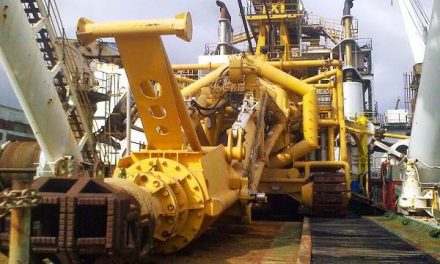
Swakop Uranium releases sustainable development report for Namibia

Swakop Uranium’s Husab mine this week released its 2021 sustainability report, which highlights to stakeholders the company’s performance, and practices in Namibia.
“The launch of the report is a momentous day for us in particular, the Sustainable Development Committee, which has been tasked by the board to ensure that the operations of Swakop Uranium Husab Mine, make positive impacts on sustainable development in Namibia, particularly in the Erongo Region,” Chairperson of the Sustainable Development Committee of the Board, Inge Zaamwani said.
According to Zaamwani the aim of the report is to provide an overview of performance against topics considered material to the business and to give an honest reflection on key achievements and areas in which improvement is still required.
“Swakop Uranium has always regarded sustainable development as its business strategy and goal, which is not only for its development, but also reflects its concern for the long-term development of Namibia,” Chinese Embassy in Namibia’s Economic and Commercial Counselor, Liu Mingzhe said at the launch.
According to Liu in recent years the sustainable development strategy has not only promoted sound development of the company’s operation but made important contributions to the economic and social development and ecological protection of Namibia.
“Environment conservation is another highly-prioritized item in our work agenda. Last year the mine once again was awarded the certification of ISO14001,” he said, adding that the mine aims to minimize the potential impact on the surrounding environment by its operation.
In 2021 despite the negative impacts of COVID-19, Husab recorded its highest production ever, whilst contributing N$3.2 billion to the economy, through local procurement, taxation, and social investment, he added.
The deputy minister of mines, Kornelia Shilunga meanwhile commended the commitment to good corporate governance by the mine, taking steps to transparently communicate its performance on a range of matters, chiefly its social and governance parameters.
“Given the environmental impacts of mining activities, it is highly advisable and recommendable that the mine takes strides to build and maintain trust with stakeholders,” she added
Shilunga meanwhile said the government as regulators are taking steps in developing frameworks and policies to ensure green and sustainable mining operations.
“The mine closure framework which is the final stage of development is a case point,” she said, adding that once implemented, mining license applicants will be required to provide closure plans with financial assurances for the rehabilitation of the environment post closure.
The mine commenced operations in 2013 and has a total of about 1,700 permanent employees and 1000 contractors











































